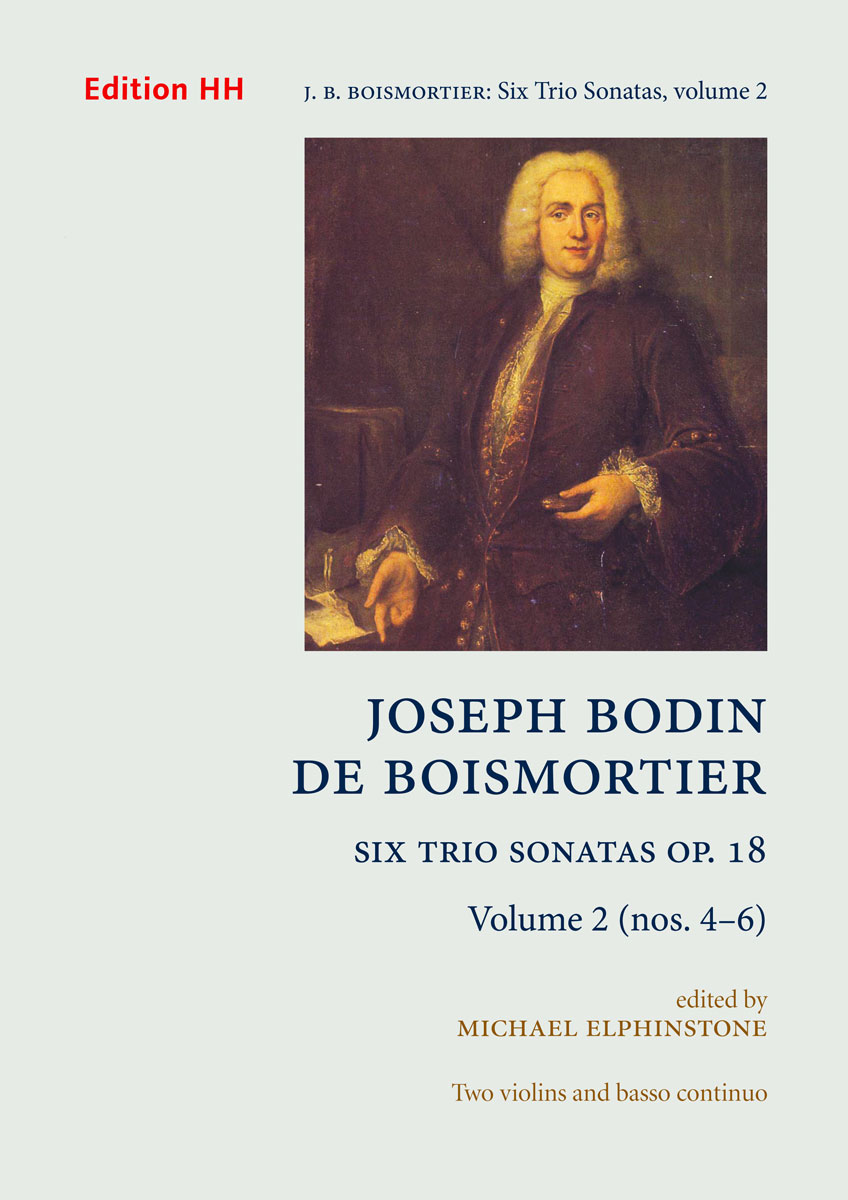|

Joseph Bodin de Boismortier Six Trio Sonatas, op.18 vol.2 (nos.4-6)
ed. MICHAEL ELPHINSTONE
Edition HH hh365.fsp, Launton, 2014 (pbk, £25)
ISMN 979 0708092 95 7
www.editionhh.co.uk
Boismortier (1689-1755) is the perfect example of a composer who was prolific and successful during his lifetime but who has subsequently fallen into obscurity; he therefore offers potentially rich pickings to a far-sighted publisher like Edition HH, whose success reflects a desire to provide a wide variety of high-quality music for the voracious appetite of the growing number of competent amateurs. This collection supports the editor’s claim that, for this composer, ‘quantity never took precedence over quality’, and his characterisation of Boismortier as ‘a born innovator and experimentalist’ (Introduction, p.v).
Boismortier’s French compositions display Italian influence, and served to disseminate Italian style, as can be seen by his penchant for the trio sonata, which he published in nine sets or collections. While these and other pieces display a fusion of French and Italian elements, the balance between the two evolves through the different collections, so that by the time of the op.18 set (1727), the emphasis is firmly on Italian form and style, particularly that of Corelli. In this departure from French style, Boismortier appears to have influenced other French composers, as the editor, Michael Elphinstone, outlines at some length.
Some of the main stylistic traits of op.18 include their (mainly) four-movement structure; a combination of major and minor keys; fugal movements; and the use of various dance forms. Naturally, the composer’s nationality and personal style are also in evidence, especially through the richness of their harmonic language, and they are varied and appealing in their idiosyncrasies. There is much idiomatic violin writing, mostly akin to that of Corelli’s trio sonatas, with some more progressive elements displayed in a few of the pieces, such as the ‘moto perpetuo’ first violin writing in the Presto second movement of Sonata no.5 in D minor.
The detailed Introduction written by the editor, who is based in Italy, is exemplary, and includes an illuminating section on French continuo figuring of the period. Michael Talbot brings his expertise to bear on the (simple) continuo realisation. As with Scarlatti’s Sonate a Quattro reviewed above, the editorial approach is wholly logical and consistent, with the usual precision and concern for user-friendliness; the introduction is provided in English, with a German translation. No facsimiles are provided, but textual notes based on the single source are included. These sonatas were well-received and influential in their own time and, like the Scarlatti quartets, they are definitely due for a revival.
We are grateful to the editor of The Consort for permission to reproduce this review.
|
